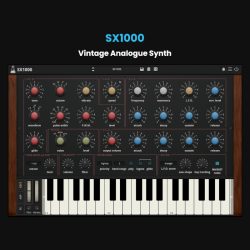by AudioThing
Speakers is a plugin effect designed to emulate a wide range of loudspeakers and microphones using our state-of-the-art convolution engine.
Shape any sound like it’s being played by an old telephone, radio, or classic cabinet; or shape it like it’s being recorded by a vintage ribbon microphone or even a toy recorder.
$56.00 $99.00
Speakers features a freely configurable effects chain, comprising compression, distortion, and filtering, as well as an array of looping background noises for setting the sound in a variety of environments.
Speakers is a zero-latency* post-production dream plugin.
No iLok or any other dongle required!
The Routing panel enables limitless reordering of Speakers’ signal flow.
To move a module, simply drag it left or right.
The Input module marks the point at which the source signal enters the signal path, disregarding everything to the left.
This can be useful for, for example, having the Noise pass through certain modules prior to being joined by the input signal further down the path.

Clicking the spanner button at the top left of either panel reveals a five-band EQ – low and high shelves and three parametric bands – for shaping the frequency response of the Microphone and Speaker emulations.
Drag the nodes around to set band frequencies and gains, scroll the mousewheel over a node to tweak the Q, double click to reset the band.


Speakers features 15 distortion and degradation algorithms for post-production and sound design.
Distortion: Carbon Mic, Classic Drive, Diode Clipper, Foldover, Soft Drive, Tape, Valve.
Degradation: Bit Crusher, Clicks, Drops, GSM, Interference, Quantization, Radio Gate, Robotization, Telecom, VoIP (by Lese Audio Technologies), Warble.



Emanuele Cioncoloni – El Fish Recording Studio
Stewart Tavener – Xaudia Antique Ribbon Microphones
Carlo Castellano – AudioThing Ltd.
*Speakers features our state-of-the-art convolution engine with zero latency. However, some degradation algorithms will introduce some latency (based on the FFT size parameter or other parameters).
You must be logged in to post a review.




Reviews
There are no reviews yet.